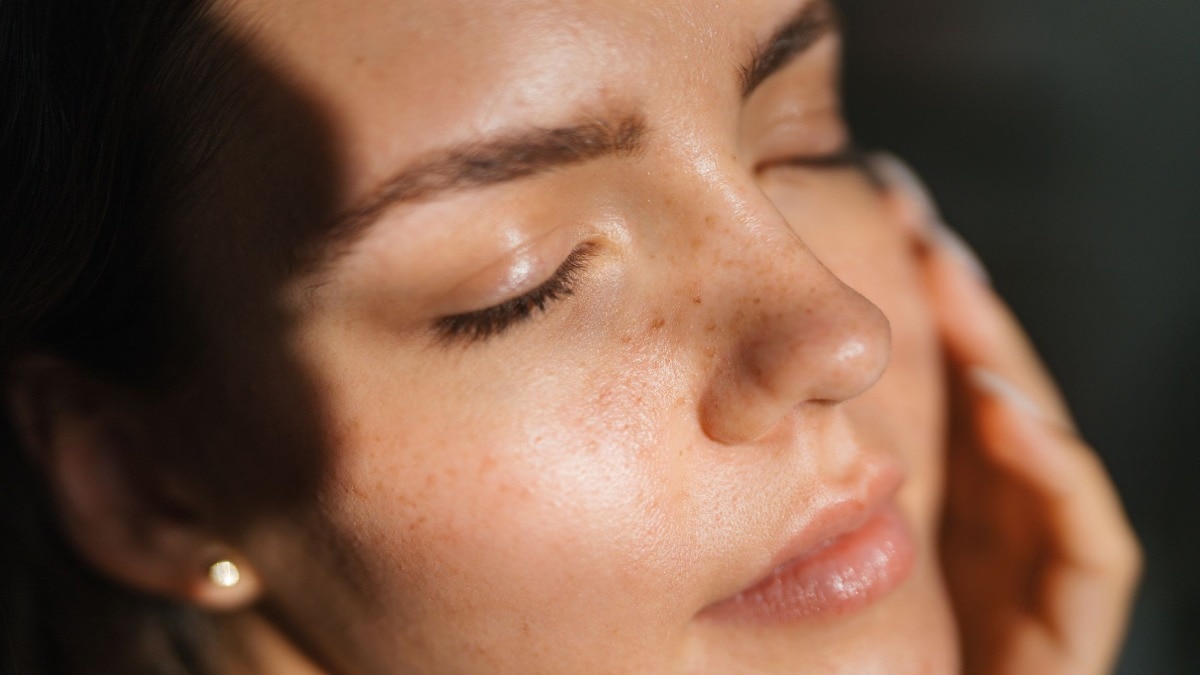Three experts answer all your burning questions about SPF
Bask (safely) in the sunshine!


You are either religious about daily sunscreen application or are still on the fence about its efficacy— there’s no in-between. While SPF is every dermatologist and skin expert’s non-negotiable product to prevent skin cancer, premature ageing, hyperpigmentation, and collagen depletion, it seems that the message still hasn’t been received by everyone. Moreover, the myths surrounding sunscreen don't seem to be dying down, despite the widespread knowledge of its importance. And when the internet is everyone’s go-to doctor, sometimes you need experts and science to help sort fact from fiction. So, we asked three dermatologists to answer some of our burning SPF questions (pun intended). Whether you're sweltering in the heat or enjoying the rain, let this serve as your reminder to apply, and re-apply, your sunscreen all year round.
Meet our experts
Dr Madhuri Agarwal, dermatologist and founder of Yavana Aesthetics Clinic
Dr Jaishree Sharad, dermatologist, and founder and director of Skinfinti
Dr Geetika Mittal Gupta, aesthetic doctor and founder of Isaac Luxe
What’s the difference between UVA and UVB protection?
The terminology on sunscreen bottle labels can often get confusing, so it’s good to understand what they mean before taking your pick. “UVA is the culprit for early ageing and wrinkles and UVB causes sunburn. UVA protection is mentioned as PA (protection grade) on sunscreen bottles, while UVB protection is measured as SPF,” says Dr Madhuri Agarwal. When it comes to SPF, 30 to 50 is a good range, and for PA +++ is generally passable. Dr Jaishree Sharad further explains, “The primary difference between the two lies in the fact that UVA and UVB rays have different wavelengths. UVA's longer wavelength penetrates deeper into the dermis whereas UVB is almost completely absorbed by the epidermis. UVA can damage DNA, while UVB is directly absorbed by DNA causing molecular re-arrangements which can result in mutations and cancer.” Though both rays are damaging, UVB poses significantly higher and more long-term risks. “When buying sunscreen it’s best to always look for UVA and UVB protection, which broad-spectrum sunscreens offer,” advises Dr Geetika Mittal Gupta.
What is the difference between physical and chemical sunscreen?
“Physical sunscreen, as the name suggests sits on the skin and bounces off the light,” says Dr Agarwal. Basically, you can apply it and step out immediately; it’s like wearing a mask or a hat. Chemical sunscreen, on the other hand, has filters that absorb the light and then bounce it off. Dr Sharad says, “Chemical sunscreen formulations are lighter and hence, have good cosmetic acceptance.” That means they are known to feel thinner and are easier to use under makeup, while physical sunscreens are more suitable for people with sensitive, easily irritable skin, physical sunscreen is advisable. Physical sunscreens contain active mineral ingredients like zinc oxide and titanium dioxide, which are less likely to irritate, making them great for sensitive skin. "Chemical sunscreens contain ingredients like avobenzone and oxybenzone—these tend to be lighter on the skin but may irritate some individuals,” explains Dr Mittal- Gupta.
How often should you reapply sunscreen?
The age-old question of sunscreen reapplication is one that’s perplexed us all at some point in time. Dr Agarwal explains that sunscreen needs to be reapplied every three to four hours, especially when there is continuous sun exposure. It often tends to become patchy, wear out, or rub off in two to three hours due to sweating, skin absorption, and evaporation, leaving the skin more vulnerable. In fact, it should be reapplied regularly especially if you’re outdoors, sweating, or swimming. "For regular daily use indoors, reapplication after four to six hours may suffice, but if you’re re-exposed to sunlight, frequent reapplication is crucial,” advises Dr Mittal-Gupta.
Are powder, stick, and spray sunscreens effective?
“Powder, stick, and spray sunscreens are not as adequate as regular sunscreens. You generally require about two finger lengths worth of sunscreen for adequate protection. So you need to apply a thick coat of these sunscreens to be near the conventional sunscreen,” says Dr Agarwal. “These formulations may be preferred, thanks to their convenience for re-application, but it’s important to apply an adequate quantity of sunscreen. Here you may follow the teaspoon rule: 3ml for the face and neck, and for each arm. 6ml for each leg, for the chest, and the back,” adds Dr Sharad. “Powder sunscreens are useful for touch-ups but shouldn’t be your primary form of protection due to uneven application. Spray sunscreens can be convenient for the body, but it’s essential to ensure even and adequate application,” advises Dr Mittal-Gupta.
What areas of the face and body are more prone to sun damage?
When SPF seems to be popping up in wellness products across the board, from makeup to body care, we can't help but wonder if it's really needed. “All exposed areas are prone to sun damage so basically face, neck, ears, upper back, arms and legs, even the hands and feet,” says Dr Agarwal. “Areas like the scalp, ears, and lips are also vulnerable but often neglected. Sun damage and ageing can be caused by exposure to the sun, and once UV radiation changes your skin cell's DNA, it can’t be reversed,” adds Dr Gupta-Mittal. This makes sunscreen the best preventative option.
Is the risk of sun damage higher in any specific season?
“Sun damage is a risk throughout the year, especially in a tropical country like India, located close to the equator which means that our summers are longer and result in direct UV exposure,” says Dr Sharad. “The sun damage risk depends on the UV index more than the season. In summer the UV rays are stronger than in winter. Also, at higher altitudes, the UV damage is greater,” adds Dr Agarwal. “Sunscreen is necessary all year round. Ideally, SPF 30-50 should be worn daily irrespective if it’s sunny or not; it should even be applied in monsoons, winters, and even indoors,” says Dr Mittal-Gupta.
Do you need SPF for the lips and the body?
To put it simply, yes. Sunscreen should ideally be applied on all exposed parts of the face and body. Including the lips, the body, and even the ears! UV exposure can cause harmful photodamage and darkening. Since lips do not have the topmost layer of skin called the stratum corneum, it makes them more vulnerable to sun damage. This makes SPF-infused lip and body care a must.
Now that we’ve decoded some of our primary SPF concerns, below are some of our top sunscreen picks.
Estee Lauder Perfectionist Pro Gel Sunscreen, ₹3,800
Clinique Superdefense City Block Sunscreen, ₹3,450
iS Clinical Eclipse 50, ₹5,100
d’you Unkissed Sunscreen, ₹2,200
Laneige Watery Sun Cream, ₹1,650
Skin1004 Centella Sunscreen, ₹2,399
Feature image: Pexels
Also read: Does SPF for your lips really make a difference?
Also read: A guide to sunscreens that play well under make-up










